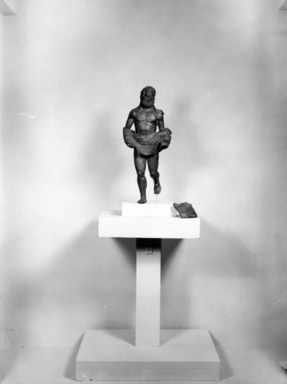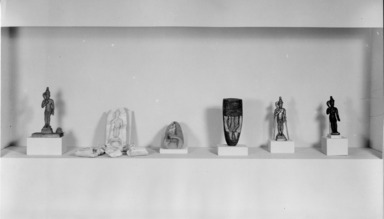

Egyptian Bronze Making, May 25, 1946 through September 02, 1946 (Image: ECA_E_1946_Egyptian_Bronze_001_print_bw_SL5.jpg Brooklyn Museum photograph, 1946)

Egyptian Bronze Making, May 25, 1946 through September 02, 1946 (Image: ECA_E_1946_Egyptian_Bronze_002_print_bw_SL5.jpg Brooklyn Museum photograph, 1946)
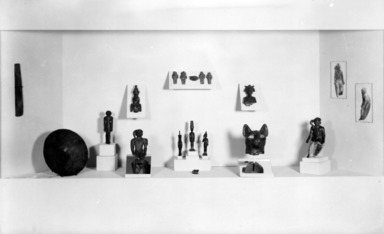
Egyptian Bronze Making, May 25, 1946 through September 02, 1946 (Image: ECA_E_1946_Egyptian_Bronze_003_print_bw_SL5.jpg Brooklyn Museum photograph, 1946)
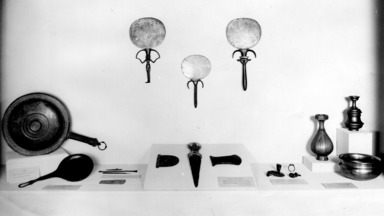
Egyptian Bronze Making, May 25, 1946 through September 02, 1946 (Image: ECA_E_1946_Egyptian_Bronze_004_print_bw_SL5.jpg Brooklyn Museum photograph, 1946)

Egyptian Bronze Making, May 25, 1946 through September 02, 1946 (Image: ECA_E_1946_Egyptian_Bronze_005_print_bw_SL5.jpg Brooklyn Museum photograph, 1946)
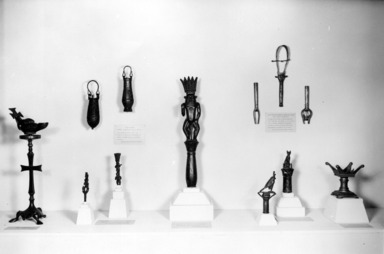
Egyptian Bronze Making, May 25, 1946 through September 02, 1946 (Image: ECA_E_1946_Egyptian_Bronze_006_print_bw_SL5.jpg Brooklyn Museum photograph, 1946)

Egyptian Bronze Making, May 25, 1946 through September 02, 1946 (Image: ECA_E_1946_Egyptian_Bronze_007_print_bw_SL5.jpg Brooklyn Museum photograph, 1946)

Egyptian Bronze Making, May 25, 1946 through September 02, 1946 (Image: ECA_E_1946_Egyptian_Bronze_008_print_bw_SL5.jpg Brooklyn Museum photograph, 1946)
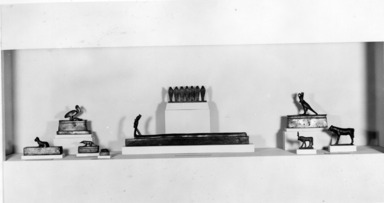
Egyptian Bronze Making, May 25, 1946 through September 02, 1946 (Image: ECA_E_1946_Egyptian_Bronze_009_print_bw_SL5.jpg Brooklyn Museum photograph, 1946)

Egyptian Bronze Making, May 25, 1946 through September 02, 1946 (Image: ECA_E_1946_Egyptian_Bronze_010_print_bw_SL5.jpg Brooklyn Museum photograph, 1946)

Egyptian Bronze Making, May 25, 1946 through September 02, 1946 (Image: ECA_E_1946_Egyptian_Bronze_011_print_bw_SL5.jpg Brooklyn Museum photograph, 1946)
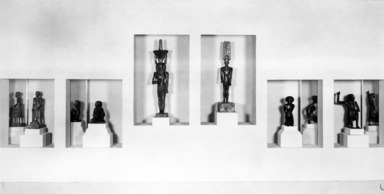
Egyptian Bronze Making, May 25, 1946 through September 02, 1946 (Image: ECA_E_1946_Egyptian_Bronze_012_print_bw_SL5.jpg Brooklyn Museum photograph, 1946)
Egyptian Bronze Making
-
May 25, 1946
An exhibition entitled “Bronze-making in Ancient Egypt” opens today in the Brooklyn Museum. This exhibition is made up of a selection of pieces from the Museum’s collections, chosen in part for their fine quality, in part for what they reveal of technical processes of the past.
Modern models illustrating in somewhat simplified form the steps in the manufacture of an Egyptian bronze by the “lost-wax” process have been made by Anthony Giambalvo, the preparator of the Egyptian Department, to introduce the exhibition. This process, fundamentally the same as that used in the production of parts for precision instruments in World War II, is further illustrated by objects some two or three thousand years old.
Other objects illustrate the great skill attained by the Egyptians in the use of the process. These include objects of daily use, from jewelry and mirrors and perfume-bottles to useful tools and weapons, religious paraphernalia, and statuettes.
By far the greatest number of statuettes that have survived date from the last thousand years before our era--the very end of ancient Egypt’s history. Most of them are figures of gods, made for the most part by mass-production methods in temple workshops for sale to the pious who presented them as votive offerings to temples or carried them home to use in household shrines. Many of these commercial objects show an amazing technical perfection, but exhibit in varying degrees the sameness that is inherent in mass production.
The exhibition includes, however, a number of pieces that seem to have been one-of-a-kind and have survived in single examples. Among these is a recently purchased seated figure of a princess of the Middle Kingdom (around 2000 B.C.) with her child. Middle Kingdom bronzes of any sort are rare. This one is not only impressive as a work of art, but reveals a considerable technical skill. Its early date is corroborated by an inscription and by the composition of the metal, which is not a true bronze but practically pure copper.
Another unique piece is a bound negro slave from the Collection of the New York Historical Society in the Brooklyn Museum. Secular figures, several of which are shown, are infrequent and genre subjects unknown among Egyptian bronzes. The slave may have been part of a group perpetuating a king with his captives. Whatever its purpose, it is a great work of art in miniature.
The exhibition, which has been arranged and installed by Mrs. Elizabeth Riefstahl, will continue through Labor Day.
Brooklyn Museum Archives. Records of the Department of Public Information. Press releases, 1942 - 1946. 04-06/1946, 065-6.
View Original
